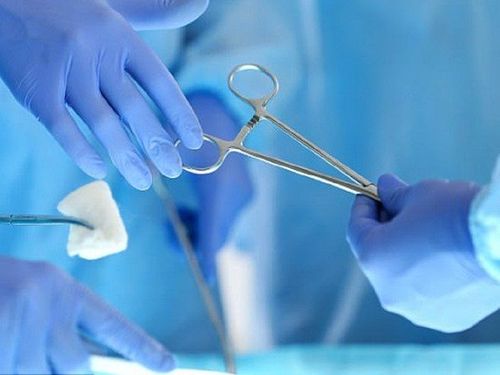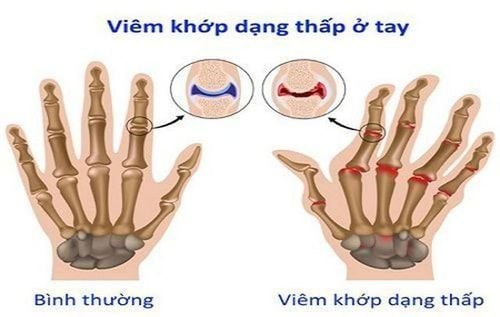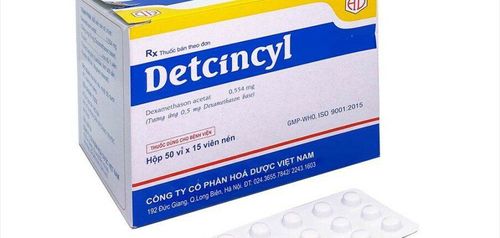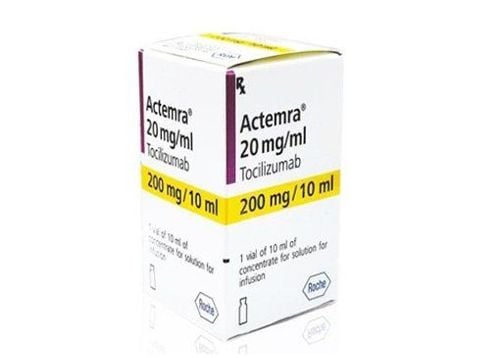This is an automatically translated article.
The article is professionally consulted by Master, Doctor Nguyen Huy Nhat - Respiratory Doctor - Department of Medical Examination & Internal Medicine - Vinmec Danang International General HospitalThe trachea is the part of the upper respiratory tract that connects the larynx to the bronchi. Tracheal stenosis is a narrowing of the trachea due to congenital or acquired causes.
1. What are the causes of tracheal stenosis?
Causes of tracheal stenosis include:Tracheal trauma after prolonged intubation Tracheal trauma after tracheostomy Some less common causes:
Congenital tracheal stenosis Lateral neck trauma outside Benign or malignant tumor invading the trachea Certain autoimmune disorders: polyarthritis, sarcoidosis; papillomatosis amyloidosis or Wegener's granulomatosis Infection (bacterial, fungal or tuberculosis) Complications after radiation therapy to the head, face and neck
2. What are the symptoms of tracheal stenosis?
Tracheal stenosis may progress slowly. Early symptoms and signs can be confused with other disorders leading to a delay in treatment.Tracheal stenosis often has manifestations such as:
Cough Cyanosis manifests in the skin and mucous membranes of the nose and mouth Difficulty breathing or shortness of breath on exertion Some cases manifest as asthma that is difficult to control in adults Often frequent episodes of recurrent upper respiratory tract infections or pneumonia Tridor breathing sounds: Inspiratory breath sounds caused by narrow airway obstruction

3. What tests should be done in case of tracheal stenosis?
Chest X-ray Computerized tomography of the neck and chest Tracheobronchoscopy Bronchoscopy4. How is tracheal stenosis treated?
Treatment of tracheal stenosis is based on clinical symptoms and etiology. Surgery is the mainstay of treatment in tracheal stenosis. Depending on the location and severity of the stenosis, the following methods can be applied:Tracheostomy: The surgeon will cut the narrowed trachea and reconnect the upper and lower tracheal ends together. . This method is often successfully applied in tracheal stenosis with good results, lasting effect. Bronchoscopy Dilation: Dilating the trachea with a balloon or tracheal dilator provides temporary symptom relief, allowing the doctor to determine the extent of the narrowing of the trachea. During tracheal dilation, the cause of tracheal stenosis can also be identified. Laser bronchoscopy: In some cases, the doctor may use a laser to remove the scars of the narrowing of the trachea. Laser in tracheal stenosis often provides good short-term results for temporary symptom relief but is not usually a long-term solution. Lasers can in some cases aggravate tracheal stenosis. Therefore, it is necessary to consider carefully before using laser in the treatment of tracheal stenosis. Tracheal Stent: A tracheal stent is a tube made of silicone or metal that is placed into the windpipe. Tracheal stents are usually a treatment for temporary or long-term tracheal stenosis.

5. What are the risks of tracheal stenosis treatment?
Tracheal stenosis surgery also carries risks and complications, although the rates are relatively low.Bleeding Infection Trachea is still narrow after surgery: some special cases in congenital tracheal stenosis in children, after surgery, the trachea becomes soft, causing breathing problems. Further intervention such as tracheal dilation or tracheal stenting is necessary. Vinmec International General Hospital is one of the hospitals that not only ensures professional quality with a team of leading doctors, modern equipment and technology, but also stands out for its examination and consulting services. and comprehensive, professional medical treatment; civilized, polite, safe and sterile medical examination and treatment space.
Please dial HOTLINE for more information or register for an appointment HERE. Download MyVinmec app to make appointments faster and to manage your bookings easily.














